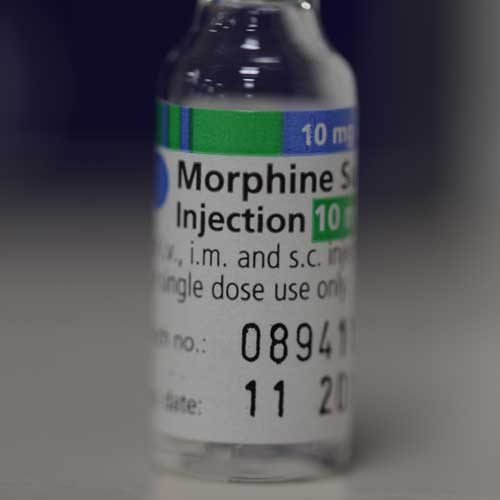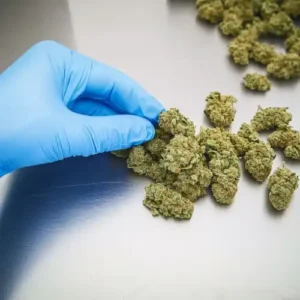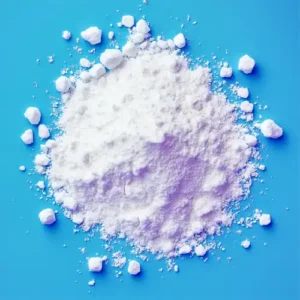Morphine is one of the most commonly abused opiates around the world. First discovered as a prescription painkiller, morphine is abused today in many ways by drug users. Left unchecked, use of the drug can lead to addiction. The best way to avoid this is by looking for warning signals in the individual early on. The person must be then be taken into treatment as early as possible.
In 2018, the BBC reported that doctors were worried that the NHS was “fuelling an addiction crisis” due to the sharp rise in the prescription of powerful painkillers.
They reported that 24 million opioids, such as morphine, were prescribed in 2017 – equivalent to 2,700 packs an hour. A former user told the website that the NHS was “creating drug addicts”.
What Is Morphine?
Morphine is an opioid drug that is often prescribed as a short-acting treatment for severe pain. It can also be used for around-the-clock treatment of pain when used in its extended-release form. Morphine may also be referred to as a narcotic.
This drug is marketed under various generic and brand names and can be administered in various forms such as in tablets, suppositories, injections and oral solutions. Traditionally, Morphine is injected intravenously.
In medical situations, Morphine is often used for anesthesia, in conjunction with other agents. Morphine is also used as a drug of abuse as it is relatively simple to get hold of and fairly inexpensive.
How Long Does Morphine Stay in Your System?
There are a number of factors that will determine how long Morphine is identifiable in the body. One vital consideration is the type of drug screen being used to do the testing (urine, saliva or hair) as each type of test works within a specific timetable of detection.
Morphine is only detectable within a short period of time when using some types of drug tests. Other types of drug screen can still identify morphine usage up to three months later.
Another crucial variable that will determine how long morphine is identifiable in the body is the physical makeup of the individual. Here a number of factors come in to play at the same time – body mass, physical activity, state of health, hydration, etc. All of these factors combine to make it nearly impossible to indicate an exact amount of time in which morphine will show up on a drug test.
Generally, morphine can be found in your system for a number of days after use. After one day, most of the morphine will leave the body. However, small traces of the drug can still be found up to 3 days later in urine and other waste products.
Morphine Detection Times
There are various drug testing methods that can be used to detect morphine. Saliva drug tests are best for detecting very recent use or for impairment. Urine tests detect drug use in the last few days. A hair follicle test offers the longest history but normally cannot be used until at least a seven days after morphine usage.
The most common way to screen for morphine is by using a urine drug test. The standard drug test membrane for morphine detects the presence of the drug with a cut-off of 300 ng/mL. This means that the drug can be detected in urine for up to three days.
The following is an estimated range of detection times for Morphine using the three main types of drug test:
- Saliva Drug Test: Up to 48 Hours
- Urine Drug Test: 2-3 days
- Hair Follicle Drug Test – up to 90 days
The Effects of Morphine Use
Morphine is a powerful opioid drug that can produce intense euphoric effects when abused. However, it also carries significant risks and side effects that users should be aware of. In the short-term, morphine can cause drowsiness, constipation, nausea, and shallow breathing. With higher doses, there is an increased risk of overdose which can lead to coma, brain damage, or even death.
Long-term morphine abuse takes an immense toll on the body and mind. Chronic users often experience declines in mental function and decision-making abilities. They may struggle with confusion, mood swings, and difficulty concentrating. Physically, morphine dependence can weaken the immune system, cause hormonal imbalances, and increase vulnerability to infections.
Perhaps one of the most insidious effects of continued morphine use is addiction. As the brain becomes accustomed to the drug’s effects, it requires higher and higher doses to achieve the same high. This downward spiral frequently leads to overdose or the transition to harder drugs like heroin. Even after getting clean, cravings and withdrawal symptoms can last months or years, making relapse a constant battle.
The Withdrawal Process
If you or someone you know struggles with morphine addiction, quitting cold turkey is extremely dangerous and inadvisable. The withdrawal timeline and symptoms can include:
6-12 hours after last use: Early symptoms like anxiety, agitation, muscle aches, excessive tearing, insomnia, runny nose, and sweating begin.
1-3 days: Withdrawal is now in full force with vomiting, diarrhea, increased heart rate and blood pressure, and severe cravings. This acute phase is the most intense.
4+ days: While physical symptoms gradually subside, psychological cravings, depression, and poor sleep often linger for weeks or months.
Attempting to quit morphine alone significantly increases the risk of relapsing or developing life-threatening complications like dehydration or seizures. The safest approach is to slowly taper off the drug under medical supervision. Doctors can prescribe medications to ease withdrawal effects and provide mental health support for recovery.
Whether taken for legitimate pain management or obtained illegally, morphine is an extremely habit-forming substance. Getting off it requires incredible determination and the right professional help. However, completely ridding your system of morphine is essential for breaking addiction’s vicious cycle. Recovering your health and regaining control over your life makes the struggle worthwhile.
Photo Credit: “Morphine” (Public Domain) by jlcampbell104
Zoom Testing is a leading UK drug testing company and a supplier of Drug Test Kits.
This post was originally published in January 2015 and has been updated since.





